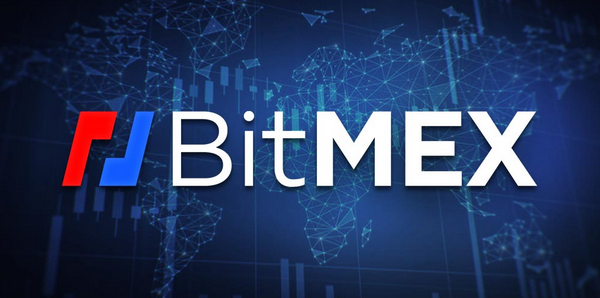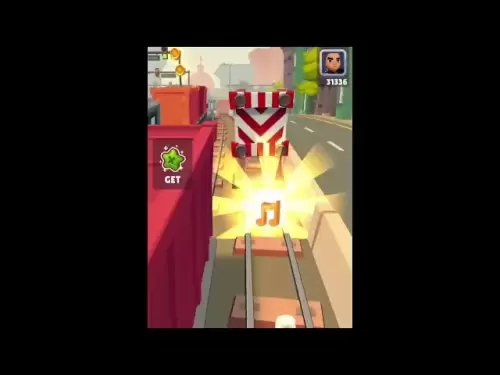-
 Bitcoin
Bitcoin $109,583.2239
0.19% -
 Ethereum
Ethereum $2,583.4612
0.48% -
 Tether USDt
Tether USDt $1.0003
-0.04% -
 XRP
XRP $2.2681
0.70% -
 BNB
BNB $659.9218
-0.52% -
 Solana
Solana $151.4961
-0.37% -
 USDC
USDC $0.9999
-0.02% -
 TRON
TRON $0.2861
1.20% -
 Dogecoin
Dogecoin $0.1718
0.04% -
 Cardano
Cardano $0.5960
-0.07% -
 Hyperliquid
Hyperliquid $40.1233
2.85% -
 Sui
Sui $2.9974
2.48% -
 Bitcoin Cash
Bitcoin Cash $497.1279
-1.76% -
 Chainlink
Chainlink $13.7275
-0.22% -
 UNUS SED LEO
UNUS SED LEO $9.0241
0.70% -
 Avalanche
Avalanche $18.5536
-0.88% -
 Stellar
Stellar $0.2421
1.39% -
 Toncoin
Toncoin $2.8593
-0.51% -
 Shiba Inu
Shiba Inu $0.0...01187
-0.07% -
 Litecoin
Litecoin $90.0023
2.90% -
 Hedera
Hedera $0.1590
2.79% -
 Monero
Monero $322.1495
0.00% -
 Polkadot
Polkadot $3.5453
-1.00% -
 Dai
Dai $1.0000
-0.01% -
 Bitget Token
Bitget Token $4.5733
-1.06% -
 Ethena USDe
Ethena USDe $1.0002
-0.01% -
 Uniswap
Uniswap $7.6345
3.03% -
 Aave
Aave $279.2583
0.47% -
 Pepe
Pepe $0.0...01003
-1.52% -
 Pi
Pi $0.4941
-0.32%
BitMEX leverage trading precautions
Leverage trading on BitMEX necessitates a cautious approach, with meticulous management of risk metrics like maintenance margin and liquidation price to ensure prudent trading practices.
Nov 19, 2024 at 04:56 pm

BitMEX Leverage Trading Precautions: Essential Measures to Safeguard Your Trades
Introduction
BitMEX, one of the leading cryptocurrency exchanges, offers leverage trading options for its users. While leverage can enhance potential profits, it also magnifies risks, making it crucial to approach this trading mode with utmost caution. This comprehensive guide outlines essential precautions to ensure informed and prudent leverage trading on BitMEX.
Step 1: Understanding Leverage and Margin Trading
Leverage trading amplifies the trading capital available to a trader by utilizing borrowed funds. On BitMEX, traders can access a leverage ratio of up to 100x, meaning they can trade with 100 times their account balance.
Margin trading refers to the use of borrowed funds for trading. When traders use leverage, they are essentially taking on margin positions, where the exchange provides a loan to cover the leveraged portion of the trade.
Step 2: Assessing Risk Tolerance and Trading Strategy
Before engaging in leverage trading, it is imperative to evaluate your risk tolerance and align your trading strategy accordingly. Risk tolerance refers to your ability to withstand potential losses, while trading strategy encompasses your approach to market analysis and trade execution.
If you have a low risk tolerance or your trading strategy involves frequent short-term trades, then utilizing high leverage may not be appropriate. Conversely, experienced traders with robust risk management strategies may be more comfortable utilizing higher leverage ratios.
Step 3: Selecting Appropriate Leverage Ratios
BitMEX offers various leverage ratios, allowing traders to customize their trading experience. The optimal leverage ratio depends on a multitude of factors, including:
- Risk tolerance: Lower leverage ratios are suitable for traders with lower risk tolerance, while higher leverage ratios cater to traders with higher tolerance.
- Volatility of the market: Highly volatile markets warrant lower leverage ratios to mitigate potential losses.
- Trading frequency: Frequent short-term traders should opt for lower leverage ratios, as high leverage can quickly lead to margin calls.
Step 4: Configuring Stop-Loss and Take-Profit Orders
Stop-loss and take-profit orders are essential risk management tools in leverage trading. Stop-loss orders automatically close a position when it reaches a predetermined price level, limiting potential losses. Take-profit orders automatically close a position when it reaches a target profit level, securing gains.
Proper placement of stop-loss and take-profit orders helps protect against significant drawdowns and ensures that profits are not prematurely realized.
Step 5: Monitoring Position Margins and Risk Metrics
Leverage trading requires vigilant monitoring of position margins and risk metrics. BitMEX provides real-time updates on account balances, open positions, and risk metrics, allowing traders to make informed trading decisions.
- Maintenance margin: This represents the minimum account balance required to maintain open leveraged positions. If the account balance falls below maintenance margin, traders face a margin call.
- Liquidation price: This is the price level at which a position is automatically closed to prevent further losses for the exchange.
Step 6: Avoiding Common Pitfalls
Leverage trading can be fraught with perils, and novice traders should be wary of the following pitfalls:
- Emotional Trading: Avoid making trades influenced by fear or greed. Stick to your trading plan and predetermined leverage ratios.
- Excessive Leverage: As tempting as it may seem, avoid utilizing extremely high leverage ratios, as this substantially amplifies risks.
- Incomplete Liquidation: Partial liquidation can leave traders exposed to further losses. Ensure that stop-loss orders are placed properly to fully close positions in adverse market conditions.
- Unrealistic Profit Expectations: Leverage trading does not guarantee extraordinary returns. Set realistic profit targets and avoid chasing losses.
Disclaimer:info@kdj.com
The information provided is not trading advice. kdj.com does not assume any responsibility for any investments made based on the information provided in this article. Cryptocurrencies are highly volatile and it is highly recommended that you invest with caution after thorough research!
If you believe that the content used on this website infringes your copyright, please contact us immediately (info@kdj.com) and we will delete it promptly.
- Crypto's Wild Ride: TOKEN6900, SPX6900, and the S&P 500 Connection
- 2025-07-04 03:50:13
- LUNA Crypto Collapse: From Billions Lost to a Quiet Comeback?
- 2025-07-04 02:35:18
- Briber's Four Forces: Decoding the Dynamics of Crypto Incentives
- 2025-07-04 02:35:18
- Solana DeFi Accumulation: Riding the Wave or Just HODLing On?
- 2025-07-04 02:40:12
- ZKasino's $30M Rug Pull: Founder Arrested in UAE – Justice Served?
- 2025-07-04 00:30:13
- Bitcoin's Bull Run: Standard Chartered and the ETF Inflow Effect
- 2025-07-04 00:30:13
Related knowledge

How to identify the contract value range in combination with the market profile?
Jul 02,2025 at 10:56pm
Understanding the Market ProfileTo effectively identify the contract value range in combination with the market profile, it's essential to first understand what each concept entails. The market profile is a framework that helps traders visualize how price and time interact across a given period, typically a trading day or session. It provides insights i...

How to use the price slope to filter the false breakthrough signal of the contract?
Jun 20,2025 at 06:56pm
Understanding the Concept of Price Slope in Contract TradingIn contract trading, especially within cryptocurrency derivatives markets, price slope refers to the rate at which the price changes over a specific time period. It helps traders assess the strength and sustainability of a trend. A steep slope may indicate strong momentum, while a shallow slope...

How to determine the expected volatility of the contract through the volatility cone?
Jun 19,2025 at 12:28pm
Understanding the Basics of Volatility in Cryptocurrency ContractsIn the realm of cryptocurrency trading, volatility is a key metric that traders use to assess potential risk and reward. When dealing with futures contracts, understanding how volatile an asset might become over time is crucial for position sizing, risk management, and strategy developmen...

How to formulate a contract intraday trading plan in combination with the pivot point system?
Jun 21,2025 at 03:42pm
Understanding the Basics of Pivot Points in Cryptocurrency TradingPivot points are technical analysis tools used by traders to identify potential support and resistance levels. These levels are calculated using the previous day's high, low, and closing prices. In the context of cryptocurrency trading, where markets operate 24/7, pivot points help trader...

How to adjust the contract position ratio through the price fluctuation entropy?
Jun 22,2025 at 11:42am
Understanding Price Fluctuation Entropy in Cryptocurrency ContractsIn the world of cryptocurrency futures trading, price fluctuation entropy is a relatively new concept used to measure market volatility and uncertainty. It derives from information theory, where entropy refers to the degree of randomness or unpredictability in a system. In crypto contrac...

How to use the volume swing indicator to predict the contract volume-price divergence?
Jun 18,2025 at 11:42pm
Understanding the Volume Swing IndicatorThe volume swing indicator is a technical analysis tool used primarily in cryptocurrency trading to evaluate changes in volume over time. Unlike price-based indicators, this metric focuses solely on trading volume, which can provide early signals about potential market reversals or continuations. The key idea behi...

How to identify the contract value range in combination with the market profile?
Jul 02,2025 at 10:56pm
Understanding the Market ProfileTo effectively identify the contract value range in combination with the market profile, it's essential to first understand what each concept entails. The market profile is a framework that helps traders visualize how price and time interact across a given period, typically a trading day or session. It provides insights i...

How to use the price slope to filter the false breakthrough signal of the contract?
Jun 20,2025 at 06:56pm
Understanding the Concept of Price Slope in Contract TradingIn contract trading, especially within cryptocurrency derivatives markets, price slope refers to the rate at which the price changes over a specific time period. It helps traders assess the strength and sustainability of a trend. A steep slope may indicate strong momentum, while a shallow slope...

How to determine the expected volatility of the contract through the volatility cone?
Jun 19,2025 at 12:28pm
Understanding the Basics of Volatility in Cryptocurrency ContractsIn the realm of cryptocurrency trading, volatility is a key metric that traders use to assess potential risk and reward. When dealing with futures contracts, understanding how volatile an asset might become over time is crucial for position sizing, risk management, and strategy developmen...

How to formulate a contract intraday trading plan in combination with the pivot point system?
Jun 21,2025 at 03:42pm
Understanding the Basics of Pivot Points in Cryptocurrency TradingPivot points are technical analysis tools used by traders to identify potential support and resistance levels. These levels are calculated using the previous day's high, low, and closing prices. In the context of cryptocurrency trading, where markets operate 24/7, pivot points help trader...

How to adjust the contract position ratio through the price fluctuation entropy?
Jun 22,2025 at 11:42am
Understanding Price Fluctuation Entropy in Cryptocurrency ContractsIn the world of cryptocurrency futures trading, price fluctuation entropy is a relatively new concept used to measure market volatility and uncertainty. It derives from information theory, where entropy refers to the degree of randomness or unpredictability in a system. In crypto contrac...

How to use the volume swing indicator to predict the contract volume-price divergence?
Jun 18,2025 at 11:42pm
Understanding the Volume Swing IndicatorThe volume swing indicator is a technical analysis tool used primarily in cryptocurrency trading to evaluate changes in volume over time. Unlike price-based indicators, this metric focuses solely on trading volume, which can provide early signals about potential market reversals or continuations. The key idea behi...
See all articles

























































































